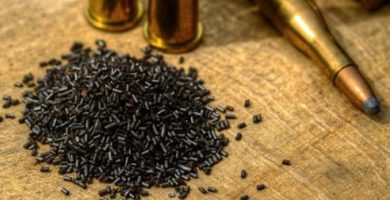What are the systems of the human body?
We explain to you what are the systems of the human body, what are its various functions and its main characteristics.
-
What are the systems of the human body?
When we talk about the systems of the human body we mean the different sets of organs that compose it, collaborating in each case with the fulfillment of some specific type of functions . Seen this way, our body can be understood precisely as a simultaneous and juxtaposed set of systems , whose proper functioning keeps us alive .
Each of these systems of the human body involves various (and sometimes the same) organs, as well as various ducts, tissues and glands, all coordinated by endocrine substances and nerve impulses , so as to operate more or less autonomously as the case may be. .
This systemic understanding of the human body is particularly useful for medicine, which often consists of specialized branches in each of these systems: cardiology, endocrinology, gastroenterology, etc.
-
Nervous system

The nervous system is the main control system of the human body , which involves an extensive network of nerves, composed of thousands of nerve cells (neurons and gliomas, mainly). This system fulfills the function of voluntary movement and decision making , as well as awareness; but also with the internal and passive control of the organism, such as the regulation of involuntary movements, reflexes and other forms of nervous information transmission, such as the senses, pain, pleasure, etc.
The nervous system can be classified into the Central Nervous System , which make up the brain, cerebellum and telencephalon, located inside the skull, as well as the spinal cord inside the spine, and to which a vast network of nerves is connected of different size and importance that make up the Peripheral Nervous System.
-
Endocrine system
 The hormones are produced by the body’s glands and spilled into the blood.
The hormones are produced by the body’s glands and spilled into the blood.This is called a complex system of internal regulation, which uses biochemical compounds called hormones to start, regulate or stop various body processes . These hormones are produced by the body’s glands and spilled into the blood, through which they travel to their destination. Thanks to hormones, metabolic, sexual and growth aspects of the organism, and even thermoregulation, can be regulated.
-
Respiratory system

It is the one that involves the oxygenation of the blood and the expulsion of carbon dioxide , indispensable processes for cellular respiration and energy metabolism . This device involves the lungs, bronchi and all the air duct from outside the body to them: the trachea, pharynx, larynx, nose and muscle that allows the inflation and deflation of the lungs: the diaphragm.
Breathing is a semi-reflex movement, which can be controlled but not prevented voluntarily , and occurs by expanding the rib cage so that the air enters through the nostrils, where it is filtered through the nasal hairs, and descends to the lungs and in the bronchi oxygen permeate into the blood. At the same time, the carbon dioxide accumulated in it is retained and exhaled in the opposite direction through the same ducts.
-
Circulatory system

Blood is the vehicle of oxygen that enters the lungs and must be distributed throughout the body. For this, the blood includes an enormous network of arteries and capillary vessels that carry the oxygenated blood to each corner , and veins that collect the blood loaded with carbon dioxide and travel back to the lungs, to start the circuit.
The motor of this movement is a muscle that constantly beats in our chest and is called the heart . It operates like a pump, sucking the blood and pushing it again, through a system of independent cavities that prevents the arterial and venous blood from mixing. This role is essential in the body and any defect that decreases the ability of the heart has effects on general health .
-
Digestive system

This is the necessary system for nutrition and food , that is, the assimilation of organic matter from outside the body . The circuit of this system begins with the mouth, tongue and teeth, as well as the salivary glands. There, the food is cut, crushed, moistened and prepared (called “food bolus”) for its descent through the esophagus to the stomach, a kind of gastric acid boiler that disintegrates food and reduces it to its most basic elements .
This process also involves the liver and pancreas , whose hormones and substances prepare everything for the absorption of nutrients, which occurs in the intestine (first thin and thick later), thanks to a series of villi that connect with the blood capillaries .
Once the nutrients are retained, the rest of the ingested organic matter continues its course towards the large intestine and its final parts: blind, colon and rectum, where they are stored until the time of their expulsion comes through the anus, in the defecation.
-
Excretory system

Also called the urinary system, it is the system responsible for freeing the body from harmful metabolic substances and residues, whose accumulation in the body is risky. For this, it has two types of expulsion routes:
- Sweat glands They are found along the skin and expel sweat, a saline liquid in which we get rid of many harmful substances and pathogenic microorganisms.
- Urinary system Composed of the kidneys, blood filters in which waste metabolic substances (such as urea) are deposited and converted into urine, then stored in the bladder, where it arrives through the ureters after various reabsorption and filtration processes. usable substances. When the urine is enough (about 400 cc) it is expelled through the urethra out of the body, in what is known as urination.
-
Reproductive system

This is the system that guarantees the human body its capacity for procreation, that is, to generate new individuals of the species. Since our reproduction is always sexual, this device distinguishes substantially between men and women, as follows:
- Male reproductive system . It is composed primarily of the penis, a highly sensitive organ that forms corpora cavernosa that can fill with blood during sexual arousal, thus generating erection and hardening of it, ready to penetrate the female genital tract. Then there are the man’s external sex glands, the testicles, located in the scrotum, in independent sacs below the penis. There are constantly produced male gametes, sperm, along with a substance that accompanies and nourishes them, semen, also produced thanks to the intervention of an internal organ known as the prostate. All this is ejaculated during intercourse within the woman’s body, so that fertilization occurs there.
- Female reproductive system . Like the male, it has sex glands known as ovaries, where female gametes are formed: the ovules. These descend to the uterus through a channel known as the fallopian tubes once a month, and if they are not fertilized, they are eliminated along with menstruation. There in the uterus is where the union of sperm and ovule occurs, to give rise to a zygote from which a fetus will occur. During intercourse, the penis enters the female body through the vagina, a channel that connects the external genitalia (major and minor lips and the clitoris) with the uterus.
-
Immune system

The immune or immune system is responsible for the defense of the organism , identifying, chasing and eliminating foreign bodies and substances that can penetrate it. To this end, it has a series of organs that produce white blood cells (lymph nodes, spleen, thymus and bone marrow) of different types: cells specialized in discovering, attenuating and expelling potentially harmful agents, such as bacteria , viruses , etc. .
These white blood cells or lymphocytes move through the human body through the integument and lymphatic system, as well as blood and other fluids. When they find a sign of infection or intoxication, they trigger the body’s alerts and do their best to isolate and expel the intruder , either through the excretory or digestive system, or even through secretions such as pus or mucus, which arise from mucous membranes or infected regions, as the case may be.
-
Locomotor system

The locomotor system is the union of the muscular apparatus and the skeletal apparatus , which are composed respectively of the almost 650 muscles of different size and shape that allow the mobilization of the body, and the 206 bones also of different shape and size that support it to the body and serve as protection for internal organs.
Thanks to these two systems, the human body retains its shape and posture , and can also move or move its limbs at will, which is essential for life.




